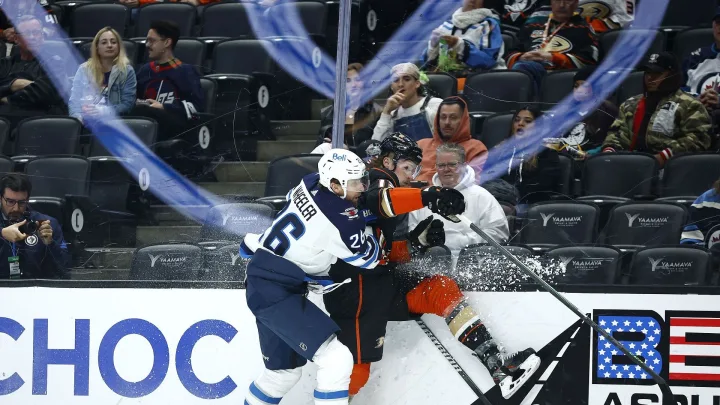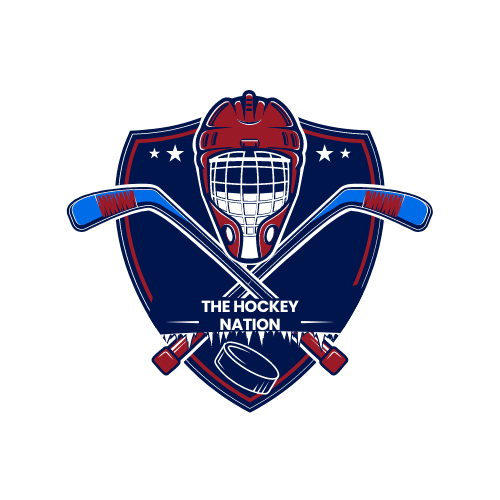Boarding in Hockey is when a player hits another who’s not ready for it, sending them into the boards. This includes checking or tripping an opponent into the boards.
Body checking is fine, but Boarding is different when a player blindsides or targets someone not expecting it. If a player smashes into someone defenseless without aiming for the puck, it’s Boarding.
Usually, hitting a defenseless player in the back, making them hit the boards face-first, leads to a penalty. After such a play, the ref decides how bad the hit was and what penalty to give. We’ll dive deeper into this in the article.
To help protect yourself against potential injuries caused by hits like these, we are launching soon some of our amazing products on our website for a wide variety of hockey helmets, hockey shoulder pads, or hockey elbow pads!
Video Example
Hey, check out the video above where the Nashville player in the yellow jersey slams the Avalanche player in the white jersey into the boards with quite a forceful hit.
Now, why is this a Boarding penalty, you ask? Well, for starters, the Nashville player didn’t even try to make a play on the puck when hitting the Avalanche player in the back.
Also, the hit came long after the Avalanche player passed the puck and had plenty of space to avoid contact.
Referee Sign

When the referee throws up a “boarding” sign, it’s like a punch motion with one hand meeting the open palm of the other hand, which is held up vertically. This all goes down right in front of the ref’s chest.
Interesting Read: How long is the hockey game
The Consequences of Boarding

Hey there, as mentioned earlier, it’s the referee’s call to decide how serious a Boarding play is. When this happens, there are four possible outcomes.
If a player gets hit from behind and is defenseless but not too hard, the ref typically calls a Minor Penalty (two minutes).
For a more serious hit on a defenseless player, the ref might go for a Major Penalty (five minutes), a Major Penalty with game misconduct (ten-minute penalty and can’t play the rest of the game), or a Match Penalty. Match penalties come into play if it’s clear that a player intended to injure their opponent.
Official NHL Boarding Rule Text (Rule 603)
Boarding is the intense move when a player shoves, trips, or body checks an opponent, sending them careening dangerously into the boards.
This covers situations like rushing at a player in a tough spot, pushing an opponent hard into the boards without trying to play the puck, or making a hit to punish or intimidate that sends the opponent slamming into the boards unnecessarily.
Boarding vs. Charging

Charging is kind of like boarding, but here’s the difference – a charging play can happen anywhere on the ice, while boarding needs a player without the puck to be slammed into the boards. So, a defenseless player is one who either lost the puck or has their back turned to the opponent about to hit them.
Charging in hockey is like when a player really goes for it and slams into another player from a distance. So, what makes it different from a regular body check?
Well, it mostly comes down to how far the player travels before the hit, and that’s all decided by the ref. Basically, if a player takes a good few strides to hit someone, they’re gonna get called for charging.
Actions That Cause Boarding Penalties
Hey, if a player does a few things, the ref is gonna call a Boarding penalty every time. Here’s what they are:
- Really hitting a defenseless player
- Back turned away from the play
- Doesn’t have the puck anymore
- Hitter’s not even trying to get the puck
- Making contact into the boards
- First contact to the head
Conclusion
In short, knowing the boarding penalty in hockey is super important for players, coaches, and fans. It’s all about keeping the game safe and fair.
Referees can figure out if a player meant to board, the play’s context, and how the contact happened to give the right penalties.
Even though it may seem strict, the boarding rule is there to protect players and keep the game honest.
Whether you’re playing or watching, understanding boarding can deepen your love for the game’s complexity and its aim to balance toughness with sportsmanship.
